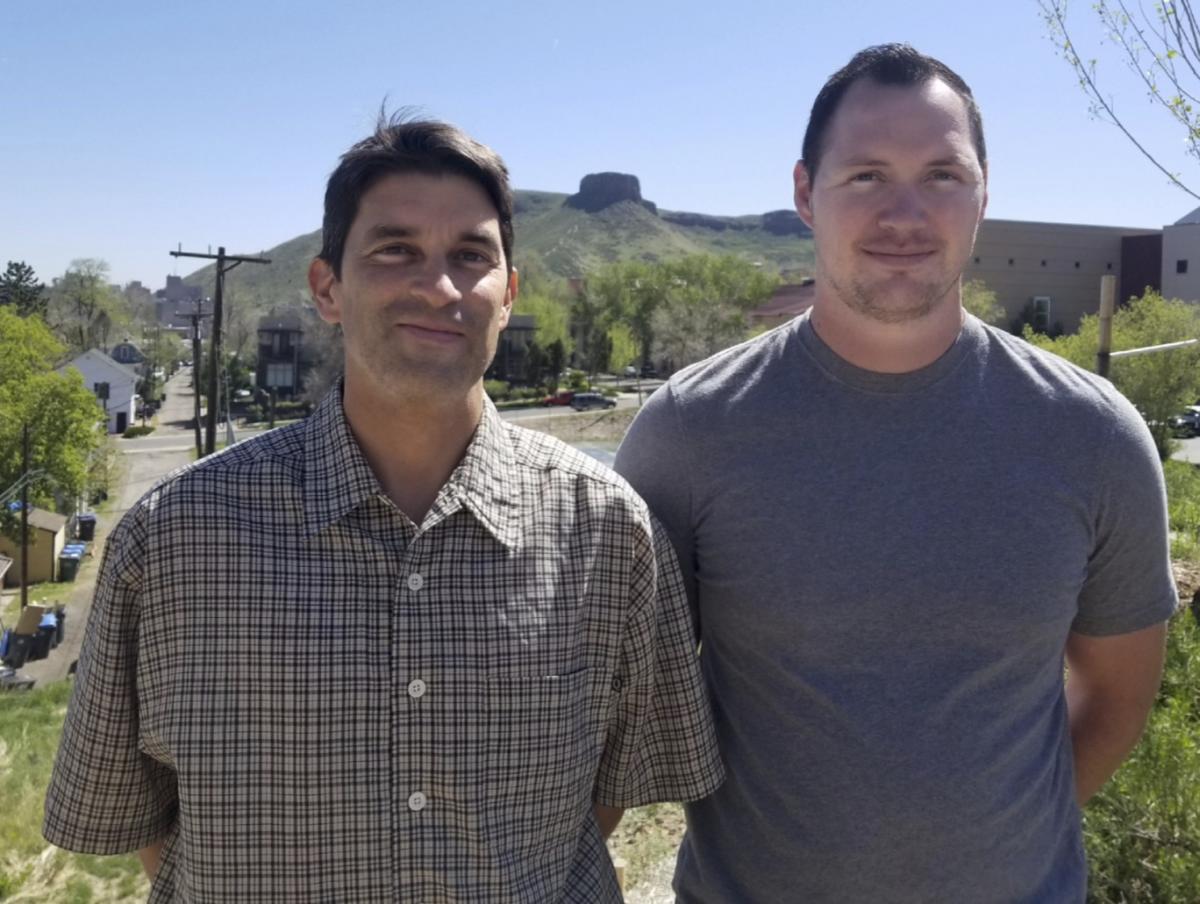Researchers at Colorado School of Mines, in partnership with the Department of Energy’s National Renewable Energy Laboratory and the University of Chicago, have developed new designer quantum dot systems with greater control over beneficial properties for photoelectrochemical and photovoltaic applications. Their research has been published in the May 16, 2017, edition of Nature Communications.
The paper, “Tuning Colloidal Quantum Dot Band Edge Positions through Solution-Phase Surface Chemistry Modification” focuses on chemical modifications the scientists were able to achieve to lead sulfide quantum dot (QD) surfaces so that their ionization energy—the amount of energy needed to remove a single electron from the solid—could be systematically tuned over an unprecedented range. Mines Chemistry Professor Alan Sellinger and graduate student Brett McNichols are coauthors on the paper.
 |
| Mines Chemistry Professor Alan Sellinger and graduate student Brett McNichols |
“This interdisciplinary research is a true team effort of computational chemistry (University of Chicago), synthetic chemistry (Colorado School of Mines) and materials chemistry/characterization (NREL),” says Sellinger
Quantum dots are considered to be pseudo-atoms that have highly tunable opto-electronic properties. Researchers are studying films of QDs as functional solids in a variety of applications, including displays, lighting, solar cells and solar photoelectrochemical cells. In a typical solid, the ionization energy is determined from the constituent atoms and in general cannot be modified. In QD solids, however, the ionization energy as well as other beneficial opto-electronic properties can be modified in controlled and rational ways.
The research also established the fundamental principles that govern the relationship between a QD and ligand, which are organic molecules chemically attached to the QD surfaces. Prior studies have shown that modifying the surface of the QDs can change the overall ionization energy, but a clear and quantitative relationship hasn’t been reported until now.
Authors from NREL includes Matthew Beard, Daniel Kroupa, Elisa Miller, Jing Gu and Arthur Nozik, and they were also joined by University of Chicago researchers Marton Voros, Nicholas Brawand and Giulia Galli.
Contact:
Megan Hanson, Communications Manager, College of Applied Science and Engineering | 303-384-2358 | mhanson@mines.edu
Mark Ramirez, Managing Editor, Communications and Marketing | 303-273-3088 | ramirez@mines.edu



